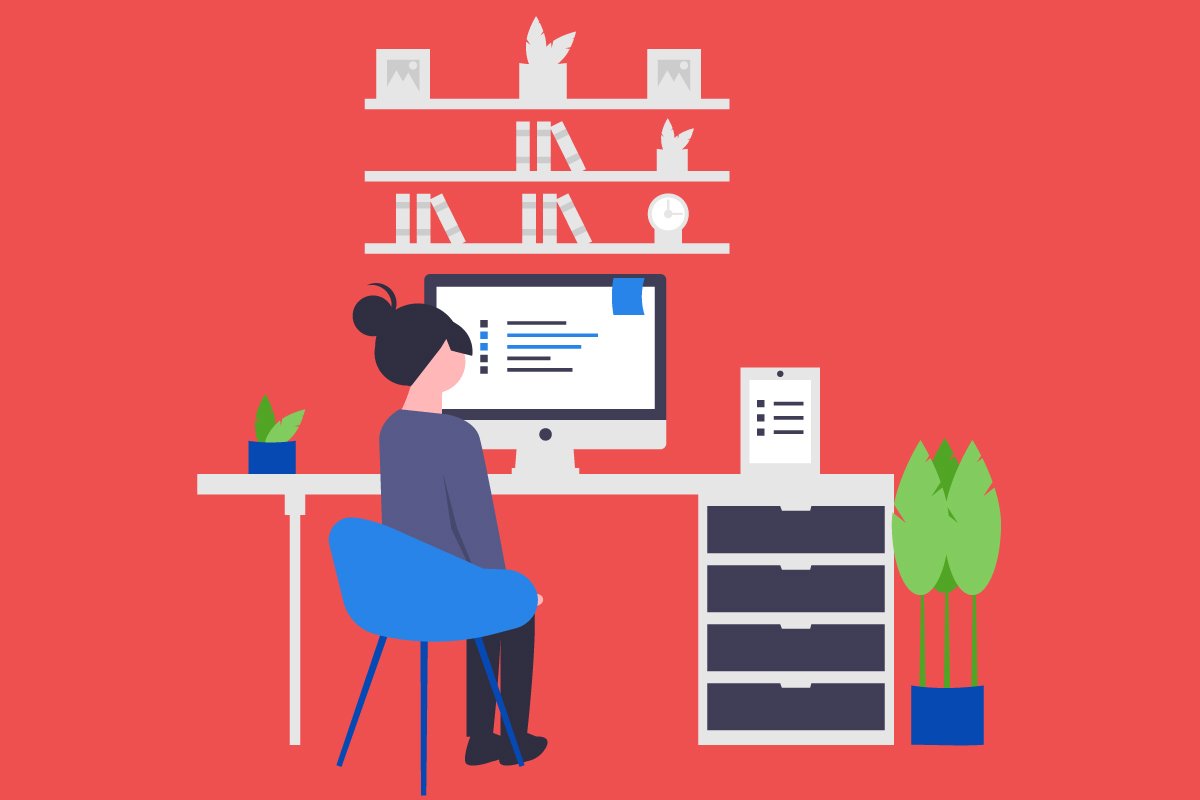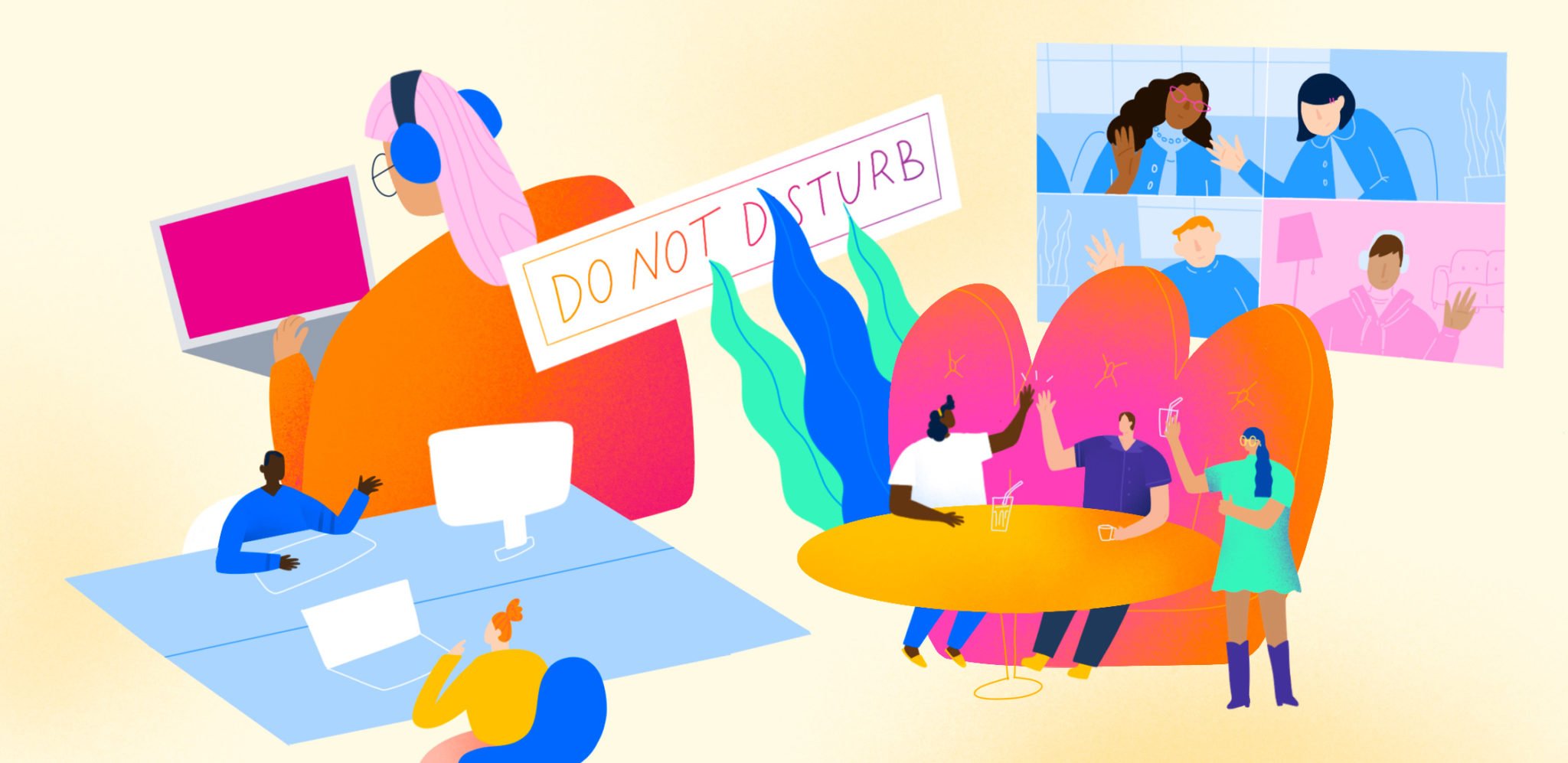
Hybrid Office and its Economic Impact
The hybrid office, which blends remote and in-office work, appears ready to become the new normal for many white-collar professionals. This model tries to take what we learned about workplace productivity and work-life balance during the first year of the COVID-19 epidemic and apply it to a new arrangement that leverages the benefits of both in-office and remote work while minimising the drawbacks.
Of course, hybrid work will have its own set of economic advantages and disadvantages.
KEY TAKEAWAYS
- The shift to a hybrid paradigm, like any major change, will result in economic winners and losers.
- Hybrid employment can save money for both businesses and employees in the knowledge economy.
- All firms that assist in implementing this new model, such as technology companies and interior designers, have the potential to boost their revenue.
- Workers and businesses that formerly provided services and space to full-time offices and their employees may need to find new sources of income, and business districts may never recover to their pre-pandemic state.
Hybrid Workplace Winners
During the epidemic, firms and employees who operate on computers, by phone, or via videoconferencing were able to run a real-time experiment on the requirement of coming to a central office five days a week. Following their findings, researchers and analysts concluded that working remotely at least two days a week could assist the following categories.
Employers
According to Kate Lister, head of Global Workplace Analytics and a specialist in helping employers improve flexible and distributed workplace strategies, companies that embrace a hybrid workplace stand to save an estimated $11,000 per year on each person who works remotely half the time. Increased productivity, real estate savings, and reduced absenteeism account for most of the savings.
Workers in the Knowledge-Economy
Workers in a hybrid workplace who work in the knowledge economy stand to gain financially. According to FlexJobs, a job search engine for remote and flexible jobs, working from home can save thousands of dollars annually on automobile maintenance, car insurance, public transit, work clothes, and eating out. Lister thinks that each worker might save between $600 and $6,000 each year. She also believes that employees can hold the equivalent of 11 workdays per year compared to commute time by working remotely half of the time.

Office Architects and Designers
Many offices will need to be remodelled to become effective hybrid workplaces and lower the risk of spreading dangerous illnesses. According to Rachael Bauer, a senior associate at Weber Thompson, an interior design company in Seattle, natural lighting, vegetation, indoor air quality, and density are vital components of a workplace that supports mental and physical health.
In a column for Inc., Rebecca Hinds, a self-described “organisational physician” who helps firms establish their cultures and grow, says that many employers adopt the wrong open office style. Many employers insist that coming into the office is helpful for business because it has been demonstrated to reduce collaboration and face-to-face interaction. Furthermore, people who work in open layouts are more likely to take sick days than those in closed forms.
Companies in the Technology Sector
Many firms may need to upgrade their conference room technology for remote and on-site staff to collaborate efficiently in a hybrid workplace. Companies may need to improve their video conferencing software and the displays, speakers, and video cameras in their conference rooms. Workers who divide their time between the office and remote sites will also want fast laptops, high-speed wireless Internet, and hotspot plans if they do not currently have these.
Cloud computing solutions that enable employees to operate efficiently and securely from any location will remain critical. Workplace management software will also be necessary for ensuring that enough space is available for everyone who expects to come to work on a particular day. High-tech sensors can also monitor anything from office occupancy and utilisation to indoor air quality, assisting businesses in managing new and growing workplace needs.
Home Improvement Companies and Contractors
If people work from home more frequently than before the epidemic, they are more likely to spend more money on their homes. Due to COVID-19, spending more time at home in 2020 entailed adjusting one’s space to new uses, paying more attention to home problems, and saving money from reduced travel and entertainment that could be put towards home repairs.
Suppose firms clarify their hybrid and remote work policy. In that case, we may see more expenditure on home renovations that people did not want to do for a transitory circumstance but feel comfortable investing in long-term use, such as remodelling or adding home office space. People may also choose to relocate if they won’t have to commute to work five days a week, and renovations are frequently associated with property purchases.

Real Estate Agents
Since the pandemic began, the possibility to work remotely, along with historically low mortgage rates, has resulted in a rush of property purchases and sales. According to Zillow Research, there has been a “huge reshuffling” toward more affordable locations. Individuals in more costly markets move away from downtown, and people in less expensive sectors move closer.
“Many hybrid employees, particularly those raising kids, would like to reside in remote locations and make a lengthier commute to the workplace a few times a week,” says Kristina Morales, an Ohio and California Realtor. “As a result of the increasing demand from those workers, single-family home prices in such bedroom communities have skyrocketed.”
Morales has already helped clients relocate from Cleveland to Detroit, from a more costly part of Orange County to a less expensive location, and even from Dubai, United Arab Emirates, to Columbus, Ohio, due to hybrid or remote employment.
Suppliers of Office Furniture
Early in the epidemic, commercial office furniture manufacturers were severely harmed, and they were unable to shift to selling directly to consumers rapidly. Those who have been planning for post-pandemic office design will benefit from this.
“We haven’t seen an increase in e-commerce purchases of standing desks, ergonomic office chairs, and other home office equipment since March through August of 2020,” says Ron Wiener, CEO of iMovR, a company that creates migrating personal workstations. “Instead of a small number of people picking what furniture 2,000 employees will use, the process has been decentralised, with each employee selecting what suits their home office space and decor and then filing for reimbursement or stipends.”
If hybrid work takes off, commercial furniture manufacturers with a varied business plan or the ability to respond to changing demand should do well. As organisations find out how to rebuild their offices for hybrid work and persistent uncertainty, MillerKnoll (previously Herman Miller) has produced new collections geared for flexibility.
MillerKnoll also sells nurses’ stations, exam room chairs, procedure and supply carts, and other items in the home, government, education, workplace change consultancy, and healthcare sectors.
In other words, the company’s performance is not contingent on large-scale purchases from corporate headquarters. MillerKnoll’s stock fell from $48 per share in November 2019 to $18 per share in April 2020 as COVID-19 spread worldwide and offices closed, but it rebounded to $48 in May 2021.
Hybrid Workplace Losers
While many organisations and their employees are expected to save money by spending less time at work—and others may reclaim or improve their incomes—others are bound to lose out due to hybrid work. Many of them are low-wage employees who lack a college diploma.
The economist Joseph Schumpeter coined the term “creative destruction” to express this element of capitalism, in which general development always occurs at the price of someone. Businesses and workers in these locations may face short- and long-term consequences. Many may adapt and re-establish themselves as successful by relocating, transferring their existing abilities to new consumers, or retraining and entering new work lines in higher demand.
Cleaning and Maintenance Services for Offices
Everyone who provided sanitation services during the pandemic was a critical frontline worker. These people have put themselves at a greater danger of contracting COVID-19, and they’ve had to deal with more powerful, virus-killing cleaning agents, which could have negative consequences for those who handle them.
Because of the pandemic, many people lost their employment or had their hours curtailed. However, as more individuals work from home, residential cleaning jobs may become increasingly plentiful.
Public Transportation
When the epidemic first broke out, public transit workers and riders saw significant reductions in service, and it’s unknown whether that level of service will ever be restored. The problem is exacerbated in regions like California, where public transportation ridership has been declining for years.
If people never return to work at the same level as before—and if they work more flexible hours—transit demand may need a lift from somewhere else to stay afloat. Furthermore, traffic congestion may intensify as more individuals return to work, and adjacent companies that support them are obliged to drive to work.

Employees in the Food Service Industry
The pandemic particularly heavily struck foodservice workers. There may be fewer jobs for them if offices continue to delay reopening and eventually reopen at a much lower level. According to NBC News, people who work for vendors who offer cafeteria staff to large corporate campuses and all restaurants, coffee shops, and bar personnel at locations that generally appeal to the office crowd are likely to be affected.
Downtown Neighborhoods
Downtown areas, central business districts, and nearby neighbourhoods that were thriving before the pandemic may lose popularity if the appeal of living near and working in major employment centres fades, and businesses that rely heavily on nearby office workers, such as restaurants, bars, and coffee shops, do not reopen. Indeed, despite government subsidies such as the Paycheck Protection Program (PPP) and the Restaurant Revitalization Fund aimed at keeping these establishments afloat, many of these districts have already changed substantially due to the pandemic.
A lot of large corporations have reduced the size of their corporate offices. Target, REI, CVS, Ralph Lauren, Old Navy, and Nordstrom are among the retailers on the list. Boston was the only primary U.S. office market whose tenants’ demand for square footage exceeded 2018–2019 baseline levels as of July 2021. According to commercial real estate firm CBRE (though Denver was close, seven markets showed notable gains in the first seven months of 2021).
Nonetheless, a shift away from working in densely populated downtown regions could open up new economic prospects surrounding the satellite offices that several companies are constructing or growing, including Apple, REI, and Google. “Right now, companies are dealing with a lot of office relocations,” Wiener explains. “We’ve talked to a lot of companies that are expanding their satellite offices in the suburbs to minimise commutes for employees who already live there or have migrated out of the congested downtown districts as a result of COVID trends.”
More room, shorter commutes, and more accessible parking are advantages for employees. “The bottom line is that when employees have the opportunity to work at a smaller plant closer to their home, they feel safer and are more likely to stay with the company,” Wiener adds.
Organisations with a Slow Adaptation Process
Many firms are making significant adjustments in reaction to the epidemic and greater awareness of workplace disparities based on race, gender, and ability. If they don’t address the needs of a diverse workforce, companies that stick to their old ways may struggle to attract and retain talent.
“Those who hedge their bets or pretend to embrace hybrid or remote-first work but don’t put the processes, policies, and resources in place to make it succeed will be the economic losers,” says Wendy Ryan, CEO of Kadabra, a transformation consulting firm based in San Jose, Calif. Over the next 20 years, organisations that take a human-centred approach to build their workplaces, schedules, and in-person collaboration requirements will be best positioned to prosper.”
Ryan is concerned that those who identify as female, BIPOC, disabled, and/or neurodivergent will be the most likely to miss out on development, sponsorship, and promotions for firms that don’t put in the effort to make hybrid or remote-first work a success for its employees.

What kinds of companies will profit from a hybrid workplace?
Here are a few examples:
- Office architects and designers
- Technology companies
- Home improvement companies and contractors
- Real estate agents
- Office furniture suppliers
What kinds of firms might be harmed by a long-term shift to hybrid work?
Because of the influence of hybrid labour on organisations like these, blue-collar workers may be disproportionately impacted:
- Office cleaning and maintenance services
- Corporate food services
- Downtown businesses
- Public transit
What impact might a hybrid workplace have on employee happiness and job satisfaction?
By offering employees more flexibility to work in whatever environment helps them flourish, a hybrid workplace may positively impact their sense of well-being and job satisfaction. That could entail coming into the office one day to work on a new project with coworkers and then working from home the remainder of the week.
It might also mean reserving a desk at work to get away from home life distractions on most days or using the company’s conference room equipment to conduct an important video meeting.
Greater efficiency, productivity, and mental health, lower absenteeism and presenteeism, stress-related sickness, burnout, and employee turnover, could all benefit from a hybrid workplace.
Final Thoughts
Companies may try to commit to a specific model—all office, all remote, or hybrid—but discover they need to modify as they learn more about what works and what doesn’t. Because organisations and employees are still figuring out the best methods to work during the pandemic, it’s too early to say if hybrid work will be a fad or the new normal. As these studies progress, we may adjust and grow more comfortable with uncertainty.
Edited and published by Ashlyn




